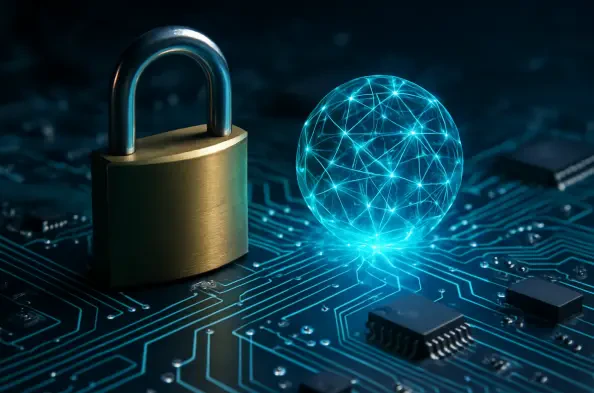Imagine a world where every digital transaction, from banking to personal messaging, is under constant threat from unseen, unstoppable computational power capable of cracking even the most robust encryption in seconds, posing a pressing reality as quantum computing advances threaten to unravel classical security systems. Quantum cryptography emerges as a beacon of hope, promising a new era of unbreakable encryption rooted in the laws of physics. This roundup gathers insights, opinions, and expert perspectives from across the cryptographic and technological landscape to explore how quantum cryptography is poised to transform digital security. The purpose is to distill diverse viewpoints on its potential, challenges, and practical implications, offering a comprehensive look at this cutting-edge field.
Unlocking the Future of Secure Communication
Quantum cryptography represents a paradigm shift, utilizing the enigmatic principles of quantum physics to create security measures far beyond the reach of traditional encryption methods. Unlike classical systems that depend on complex mathematical problems, this innovative approach taps into the unpredictable behavior of quantum particles to safeguard data. Many industry leaders emphasize that this shift is not just an upgrade but a necessary evolution as cyber threats grow increasingly sophisticated.
The urgency for such advancements cannot be overstated, especially as classical cryptography faces existential risks from emerging quantum computers capable of solving problems previously deemed intractable. Experts across the tech spectrum agree that the potential collapse of current security protocols under these advanced threats positions quantum cryptography as a critical frontier. This concern drives research and investment into solutions that can withstand future computational power.
This exploration will navigate through the theoretical foundations of quantum cryptography, the real-world hurdles it faces, and its transformative capacity to protect digital interactions. By compiling varied perspectives, a clearer picture emerges of how this field could redefine trust in technology. The journey ahead promises to reveal both the excitement of innovation and the pragmatic challenges of implementation.
Decoding the Quantum Advantage in Encryption
Harnessing Quantum Physics for Unbreakable Codes
At the heart of quantum cryptography lies the exploitation of quantum states and qubits, which exhibit properties like superposition and entanglement to create encryption that defies conventional hacking attempts. Researchers highlight that these characteristics could render codes resistant to attacks, even from quantum computers expected to emerge in the coming years. This potential for unparalleled security sparks significant interest among cryptographers aiming to future-proof digital systems.
Pivotal studies in recent years, including significant work from around 2025 onward, suggest that quantum problems might serve as a stronger foundation for security than the vulnerable one-way functions of classical systems. These findings propose a shift toward encryption that does not rely on computational difficulty but on physical principles, offering a novel layer of defense. Such advancements are seen as a cornerstone for building robust cryptographic protocols.
However, skepticism persists among some experts who question whether quantum-based systems can genuinely outstrip classical vulnerabilities. While optimistic projections envision a secure digital landscape, cautious voices warn of unforeseen weaknesses that could emerge as quantum technology matures. This debate underscores the need for rigorous testing and validation before widespread adoption can be considered feasible.
Bridging Theory with Tangible Security Solutions
Efforts to translate quantum cryptography from abstract theory into practical tools are gaining momentum, with researchers developing constructs like one-way state generators to support diverse security applications. These innovations aim to provide the building blocks for protocols that can secure everything from messaging apps to financial transactions. Many in the field view these developments as a crucial step toward integrating quantum solutions into everyday technology.
The real-world implications are vast, with the potential to revolutionize industries through secure communication channels and tamper-proof digital signatures. For instance, adopting such technology could ensure that sensitive data remains protected against interception, reshaping trust in sectors like healthcare and government. Experts point out that these applications, if realized, could set a new standard for privacy and security.
Yet, challenges remain, including the risk of depending on unproven quantum mechanisms and the technological barriers that hinder immediate rollout. Critics argue that the competitive security landscape demands faster deployment, which current hardware limitations cannot support. This tension between innovation and practicality continues to shape discussions on how soon quantum tools can be integrated into mainstream use.
Emerging Frontiers in Quantum Encryption Design
Recent trends in quantum cryptography focus on novel concepts like one-way puzzles and complex mathematical challenges such as the matrix permanent problem, which could serve as cornerstones for next-generation security. These approaches defy traditional logic by leveraging inefficiencies in a way that still ensures protection, intriguing researchers with their counterintuitive strength. Such ideas are gaining traction as potential game-changers in the encryption domain.
Across global research communities, varying strategies highlight the speculative yet promising nature of quantum advantages over classical systems. Some groups prioritize theoretical proofs of security, while others push for experimental validations that could accelerate practical use. This diversity in focus reflects a collective drive to uncover whether quantum methods can indeed offer superior protection in different contexts.
Contrary to the notion that quantum cryptography remains a distant prospect, incremental progress suggests that disruptions in digital protection might be closer than anticipated. Many experts note that small but significant breakthroughs are paving the way for near-future applications, challenging the assumption of prolonged delays. This evolving landscape keeps the field dynamic, with each advancement fueling anticipation for tangible outcomes.
Navigating the Intersection of Innovation and Limitation
The pursuit of quantum cryptography embodies a delicate balance of optimism and obstacles, capturing the emotional and intellectual rollercoaster experienced by pioneering minds in the field. Stories of persistence amid setbacks reveal a deep commitment to solving some of technology’s most pressing security issues. This human element adds a compelling layer to the technical discourse surrounding quantum advancements.
A notable disparity exists between the rapid pace of theoretical discoveries and the slower development of quantum hardware, prompting speculation on how interdisciplinary collaboration could bridge this gap. Some researchers advocate for partnerships between physicists, mathematicians, and engineers to hasten progress. Such alliances are seen as vital to overcoming the physical limitations that currently stall practical implementation.
These struggles, far from detracting from the field, enrich its narrative by showcasing resilience and creativity in tackling complex challenges. The journey toward a quantum-powered security framework is not just about technical success but also about fostering a deeper understanding of innovation’s limits and possibilities. This nuanced perspective highlights the broader impact of building defenses for tomorrow’s digital world.
Key Insights for a Quantum-Secure World
Synthesizing opinions from various corners of the tech and research sectors reveals quantum cryptography’s immense potential to redefine encryption, tempered by its present theoretical constraints. Many agree that while the promise of unbreakable codes is enticing, the field remains in an exploratory stage with significant hurdles to clear. This consensus points to a future where quantum solutions could dominate, provided current limitations are addressed.
Strategic guidance for tech leaders and policymakers includes prioritizing investment in quantum research and developing hybrid systems that blend classical and quantum security during the transition period. Experts stress the importance of preparing infrastructure now to avoid being caught off-guard by rapid advancements. Such proactive measures are deemed essential for maintaining digital integrity in an evolving threat landscape.
For the broader audience, practical steps involve staying updated on quantum developments and advocating for stronger security frameworks within personal and professional spheres. Engaging with educational resources and supporting policies that fund cryptographic innovation can amplify individual impact. These actions empower communities to contribute to a safer digital environment as quantum technology progresses.
Shaping the Horizon of Digital Defense
Reflecting on the insights gathered, it becomes evident that quantum cryptography marks a profound shift, merging groundbreaking science with the urgent demand for resilient security in an interconnected era. The diverse perspectives highlighted how this field stands as a response to evolving cyber threats, promising a digital ecosystem fortified by the principles of quantum mechanics. Each opinion added depth to the understanding of what a quantum-secure future could entail.
The enduring relevance of this domain is clear, as the need for robust defenses grows alongside technological advancements. Long-term implications point to a landscape where trust in digital interactions could be fundamentally restored through quantum innovations. Discussions underscore that the stakes have never been higher for ensuring data protection against increasingly sophisticated attacks.
Looking back, the journey through these expert insights offers a compelling call to action: as quantum cryptography inches toward reality, the focus shifts to readiness and adaptation. Stakeholders are encouraged to explore collaborative initiatives that could accelerate practical deployment, while individuals can delve into emerging literature to grasp upcoming changes. This collective effort promises to pave the way for embracing a transformative era of technological trust.






